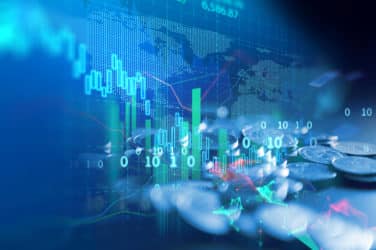Earlier this month, Dash Financial Technologies added James Doherty as Head of Equity Product. Markets Media caught up with Doherty to ask him about his new role.
You’ve had a very impressive career in the electronic trading space. What attracted you to Dash?

James Doherty, Dash
I love working with clients who are into the details and nuances of trading. And I get excited by the camaraderie in solving a client’s problem. That has to start with complete transparency. At Dash that’s the mission. The ethos of complete client transparency is core and has been since the firm was launched eight years ago. Clients recognize this value – look no further than our dominating market share in listed options – and I believe it will be the foundation of the next industry innovation cycle.
What are your near-term goals at Dash?
The overarching goal is to continue bringing new insights to clients during all phases of the investment lifecycle – pre-, intra- and post-trade. We want clients to look forward to pulling up a trade analyzer because they get immediately actionable information. Whether it’s a macro data point that they want to relay to their PM, or an update on market conditions that changes how they are sourcing liquidity, we want clients to get definitive value from the insights we are providing.
How has the electronic trading business changed over the course of your career?
The pace of change in our industry is staggering. Facebook and modern electronic trading started at roughly the same time – roughly 2003 – and you could argue Facebook is just now hitting maturity. The US equities electronic market, on the other hand, reached maturity around 2009. That’s three times faster. We’re at the point today where the brokerage industry needs to open up every aspect and nuance of their process so they can work collaboratively with their clients to add value. Interestingly, it also appears that the buy side is starting to adopt the model where not every service or piece of content should fit within a per share payment model.
In your opinion, what are the biggest challenges for today’s institutional trader?
Today, every trading desk head is expected to be an umpire, coach and data scientist, all on top of being a trader. And as their work load has increased, their toolset has not kept pace. Finding liquidity today is manifestly harder than several years ago given the lower volumes and the growth in proprietary platforms. The increase in this ‘proprietary’ liquidity is forcing buy-side traders to re-examine their broker relationships and become even more buttoned-up about their data. This is a vicious cycle that needs to be rectified before things will improve.
Before joining Dash it looks like you worked at an ML-driven investment firm. What role do you think AI/machine learning will ultimately play in electronic trading?
In general I’ve been disappointed in the results of AI in the investment process thus far. Most of the AIs people are familiar with – Alexa, image-recognition technology, etc. — are decades-old efforts that are just reaching maturity now. They also address domains that are clear cut, as everyone can agree on what ‘best execution’ means for Siri or a self-driving car. Investment performance, on the other hand, is much more subjective and personal. That said, new insights can come from anywhere and I look forward to learning them when they do. It was a fantastic learning experience working with ML and taught me a great deal about the opportunities and limitations of that approach.






